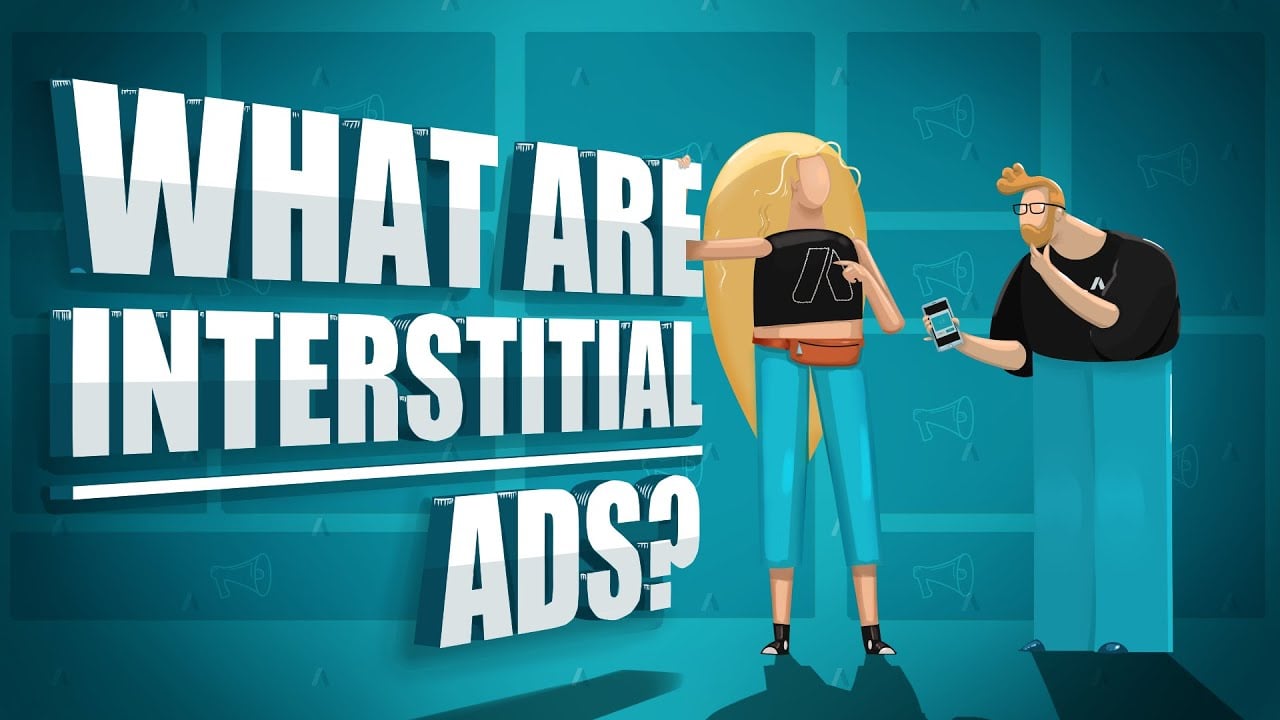- interstitial ads
- What Are Interstitial Ads?
- How To Integrate Interstitial Ads In An App?
- Best Practices For Displaying Interstitial Ads
- Different Types Of Interstitial Ads Available
- Important Considerations For Interstitial Ads
- Advertisers’ Responsibilities For Reducing Accidental Clicks
- Impact Of Interstitial Ads On App Installs And Revenue
- Challenges And Exceptions In Using Interstitial Ads
Are you tired of constantly being bombarded with ads that interrupt your mobile browsing experience? Well, you’re not alone.
Introducing interstitialads, the latest and most effective way for advertisers to reach their audience without disrupting their user experience. These full-screen ads are strategically placed at natural breaks, optimizing the balance between ad frequency and user enjoyment.
But how do you integrate interstitial ads into your own app? Don’t worry, we’ve got you covered.
In this article, we’ll dive into the best practices, code examples, and even provide you with a sample app to help you get started. So, if you’re ready to boost your installs and revenue, keep reading.
interstitial-ads">interstitial ads
Interstitial ads are full-screen ads that appear at natural transition points in an app. They can be in the form of text, image, or video and provide an opportunity for users to engage with the ad by tapping on it to continue or close it and return to the app.
To ensure a smooth user experience, interstitial ads should be shown during natural breaks in the app, such as at the end of a level or between different sections. Adequate loading time is crucial, and ads can be preloaded using the “load()” function to minimize any delays when displaying them.
It’s important to consider the frequency and timing of interstitial ads, as increasing their frequency may generate more revenue but can also degrade the user experience and lower click-through rates. Overall, interstitial ads have a high impression rate and can effectively increase app installs and revenue if used appropriately.Key Points:
- Interstitial ads are full-screen ads that appear at natural transition points in an app.
- They can be in the form of text, image, or video.
- Users can engage with the ad by tapping on it to continue or close it and return to the app.
- Interstitial ads should be shown during natural breaks in the app to ensure a smooth user experience.
- Loading time should be minimized by preloading ads using the “load()” function.
- Frequency and timing of interstitial ads should be carefully considered to balance revenue generation with user experience and click-through rates.
Sources
https://developers.google.com/admob/android/interstitial
https://instapage.com/blog/interstitial-ads
https://www.facebook.com/audiencenetwork/monetize/ad-formats/interstitial-ads
https://clevertap.com/blog/interstitial-ads/
Check this out:
💡 Pro Tips:
1. Optimize interstitial ad frequency to balance revenue and user experience. Increasing ad frequency may boost revenue, but it can also lower clickthrough rates and disrupt user engagement. Find a sweet spot that maximizes revenue while still providing a positive user experience.
2. Prioritize natural breaks in your app for displaying interstitial ads. Users are more likely to engage with ads during natural transition points, such as between levels or when changing app sections. Avoid interrupting users frequently and allow them to enjoy uninterrupted app usage.
3. Take advantage of the available options for interstitial ad types. Text, image, and video interstitial ads offer different ways to engage users. Consider which type is most suitable for your app and audience to maximize user interest and interaction.
4. Optimize loading time by preloading interstitial ads. Use the “load()” function to preload the ad before showing it to users. This ensures that the ad is ready to be displayed without causing delays or interruptions during the user experience.
5. Carefully consider the content displayed immediately after an interstitial ad to reduce accidental clicks. Ensuring that the next screen or action is clearly distinguishable from the ad can prevent users from unintentionally clicking on an ad when they intended to interact with your app.
What Are Interstitial Ads?
Interstitial ads are a highly effective form of mobile advertising that can significantly boost audience engagement and revenue. These full-screen ads appear at natural transition points within an app, such as between levels or when navigating to a new screen.
They provide a seamless user experience by respecting the flow of the app while offering valuable promotional content.
Users have the option to either tap on the ad to continue or close it and return to the app. This flexibility ensures that users feel in control and are not forced to interact with the ad if they do not wish to do so.
With interstitial ads, advertisers have the opportunity to capture users’ attention during key moments, increasing the likelihood of conversions and app installs.
However, it is important to note that Google Mobile Ads SDK versions 19.8.0 and lower are no longer supported for serving ads. Advertisers should ensure that they are using the latest supported versions to ensure optimal performance and compatibility.
How To Integrate Interstitial Ads In An App?
Integrating interstitial ads into an app is a straightforward process. The Google Mobile Ads SDK provides code examples and resources for both Java and Kotlin, making it accessible to developers of different programming backgrounds.
To begin, developers should use test ads during the app building and testing phase to avoid any potential account suspension. Once the app is ready for production, developers can follow the provided code examples to seamlessly integrate interstitial ads into their app.
The FullScreenContentCallback class is responsible for handling events related to displaying the ad. Developers can utilize this class to listen for events such as when the ad is shown, closed, or fails to load.
By properly implementing the callback, developers can ensure a smooth ad experience for users.
Updated for the new year’s advertising best practices.
It is recommended to show interstitial ads during natural breaks in the app, such as between levels or when transitioning to a new section. This allows for a seamless integration of the ad without disrupting the app’s flow.
Adequate loading time is also crucial for a positive user experience. To ensure this, developers should preload the ad using the load() function before displaying it to users.
Best Practices For Displaying Interstitial Ads
When displaying interstitial ads, it is important to follow best practices to maximize user engagement while maintaining a positive user experience. Consider the following guidelines:
Place ads at expected breaks: Users are more likely to engage with interstitial ads when they occur naturally during breaks in the app. Placing ads strategically can enhance the overall user experience and increase ad performance.
Pause app actions during ad display: To prevent users from accidentally interacting with the app during an ad, it is essential to pause app actions while the ad is shown. This ensures that users can fully engage with the ad content without any distractions.
Consider frequency and timing: While increasing the frequency of interstitial ads may lead to higher revenue, it is important to strike a balance to avoid degrading the user experience and lowering click-through rates. Users should not feel frequently interrupted and must still enjoy using the app.
Insert a delay after the end of a level: To minimize frustration and improve the effectiveness of interstitial ads, consider inserting a short delay after the completion of a level or significant action. This gives users a moment to process their achievement before being presented with an ad.
Different Types Of Interstitial Ads Available
Interstitial ads come in various formats, providing advertisers with flexibility in choosing the most suitable type for their campaigns. The three main types of interstitial ads are:
- Text ads: These ads consist of text-based content, typically accompanied by a brief description or call-to-action.
They are an effective way to convey concise messages and direct users to specific actions.
- Image ads: Image-based interstitial ads utilize compelling visuals to grab users’ attention and convey a brand’s message.
High-quality images with captivating designs can significantly enhance engagement and drive conversions.
- Video ads: Video interstitial ads offer the opportunity to deliver engaging and immersive content to users.
With the increasing popularity of video content, these ads provide ample space for advertisers to showcase their products or services in a visually captivating manner.
Important Considerations For Interstitial Ads
To ensure optimal performance and user experience with interstitial ads, there are several important considerations to keep in mind:
Suspend resources: To provide the ad with the necessary resources and ensure smooth playback, it is important to suspend any resources that may interfere with the ad’s performance. This includes pausing audio, animations, or any other actions that may distract users from the ad content.
Adequate loading time: Preloading the ad before showing it to users is crucial for a seamless experience. This ensures that the ad is ready to be displayed without any significant delay, preventing users from losing interest or becoming frustrated.
Mobile-friendly considerations: It is crucial to ensure that app pages with app install interstitials comply with mobile-friendly standards set by Google. Failure to meet these standards may result in potential penalties or negative impacts on search rankings.
Ad disallowed types: Google disallows certain types of interstitial ads, but there are exceptions. Ads for cookie consent, age verification, and page-to-page ads are allowed.
Advertisers should carefully review Google’s guidelines to ensure compliance and avoid any potential penalties.
Advertisers’ Responsibilities For Reducing Accidental Clicks
To mitigate the risk of accidental clicks, advertisers have a responsibility to carefully consider the content and placement of interstitial ads. Some best practices include:
Ensuring that the ad content is relevant and engaging to the target audience to reduce accidental clicks.
Carefully selecting the next element that appears after an ad to minimize accidental clicks and improve user experience.
Directing targeted traffic to dedicated landing pages instead of generic app pages to increase conversion rates and decrease accidental clicks.
For detailed specifications and targeting options, advertisers can consult the Instapage Digital Advertising Specs Guide, which provides up-to-date information on ad specifications and strategies.
Impact Of Interstitial Ads On App Installs And Revenue
Interstitial ads have proven to be highly effective in driving app installs and generating revenue. Their full-screen format captures users’ attention at key moments, increasing the likelihood of conversions and installs.
With a high impression rate, interstitial ads provide advertisers with ample opportunities to reach their target audience. By implementing them strategically and following best practices, advertisers can achieve optimal results and maximize their return on investment.
Challenges And Exceptions In Using Interstitial Ads
While interstitial ads offer numerous benefits, there are some challenges and exceptions to consider. Google’s disallowed types of interstitial ads should be carefully reviewed and avoided to ensure compliance with advertising guidelines.
Additionally, advertisers must be mindful of not excessively interrupting the user experience. Striking a balance between ad frequency and user enjoyment is crucial for maintaining a positive relationship with app users.
As with any digital advertising campaign, advertisers should be cautious to reduce accidental clicks. By carefully crafting ad content and placements, advertisers can minimize accidental clicks and improve the overall effectiveness of their campaigns.
Advertising Platform for Marketers • Native Ad Network • Self-Serve DSP Platform











